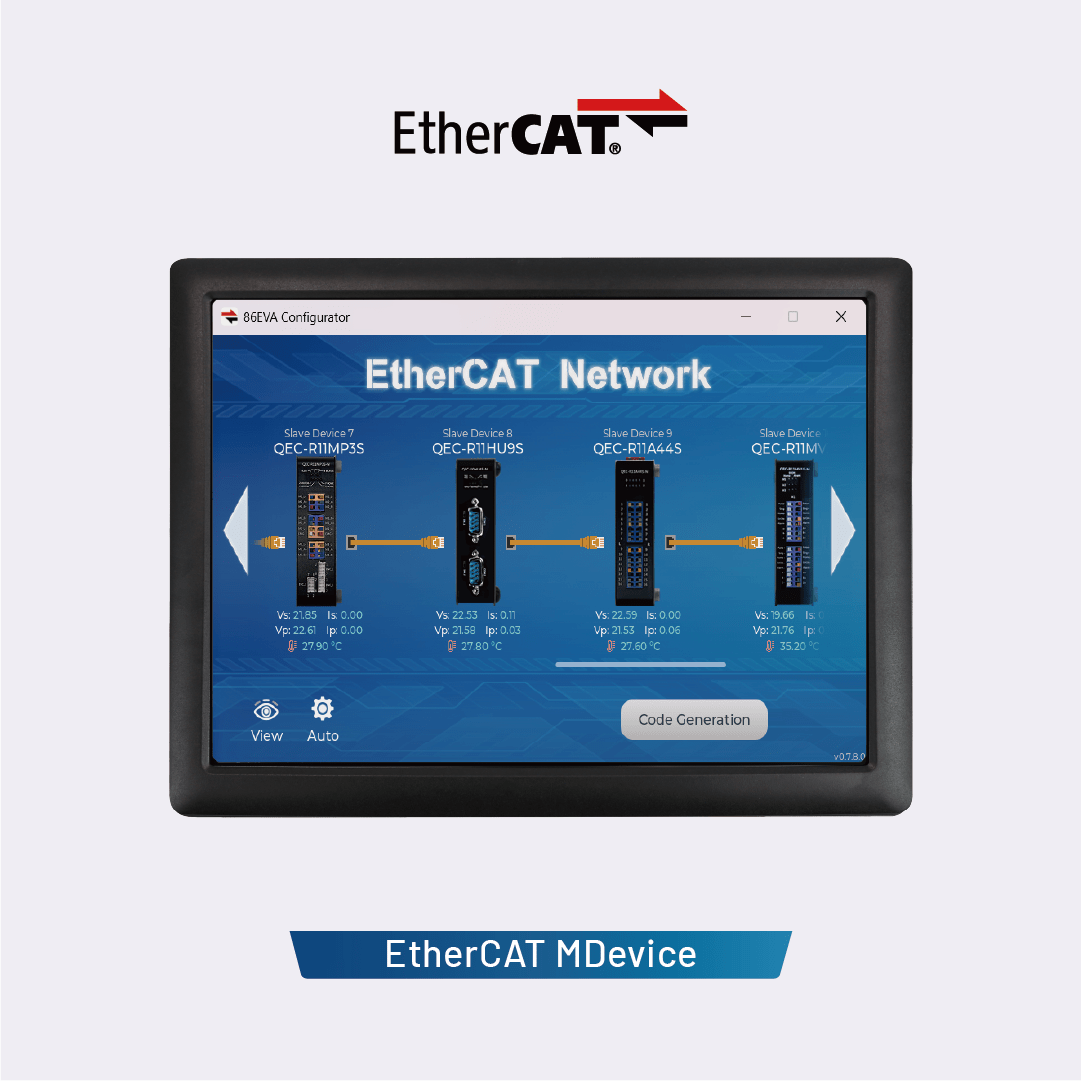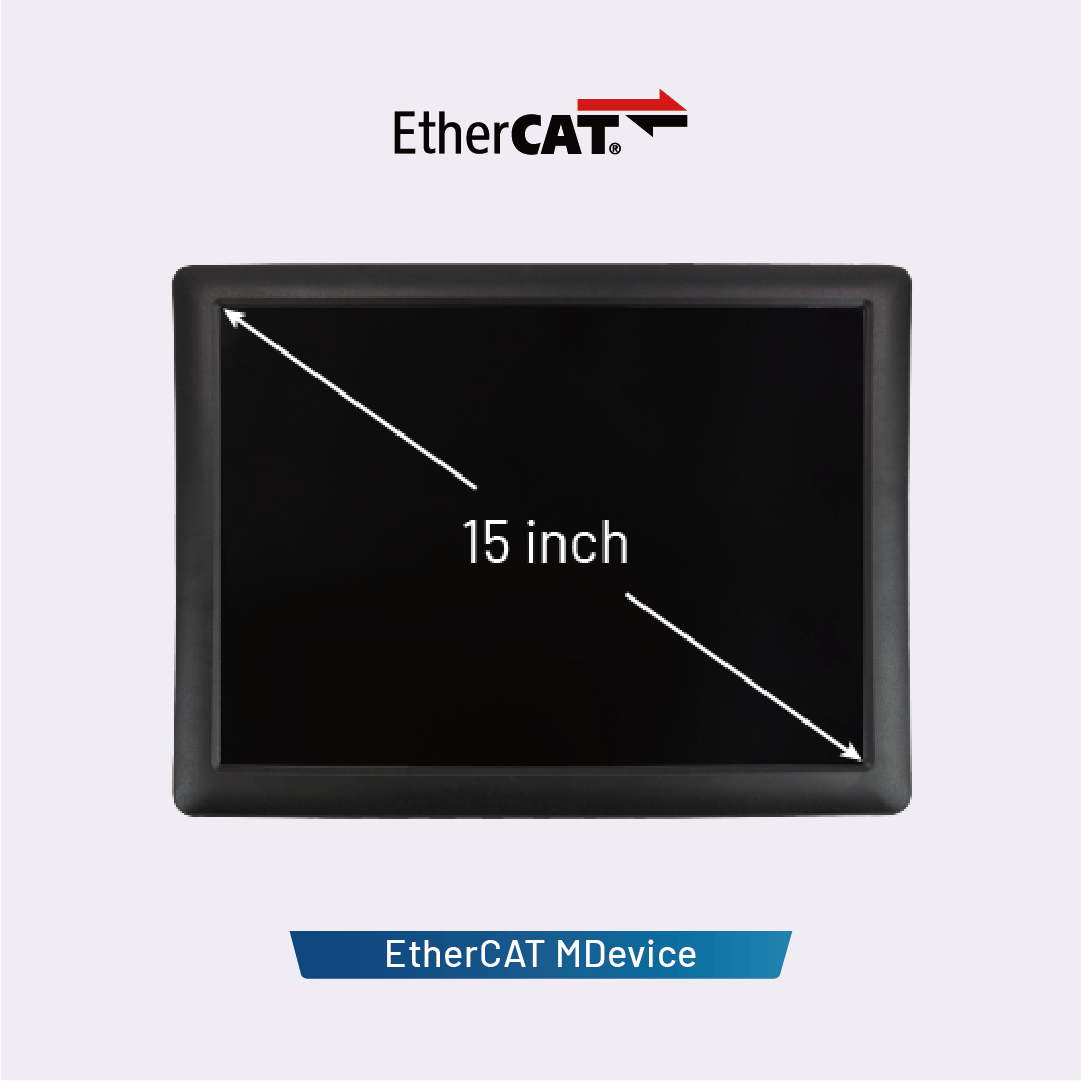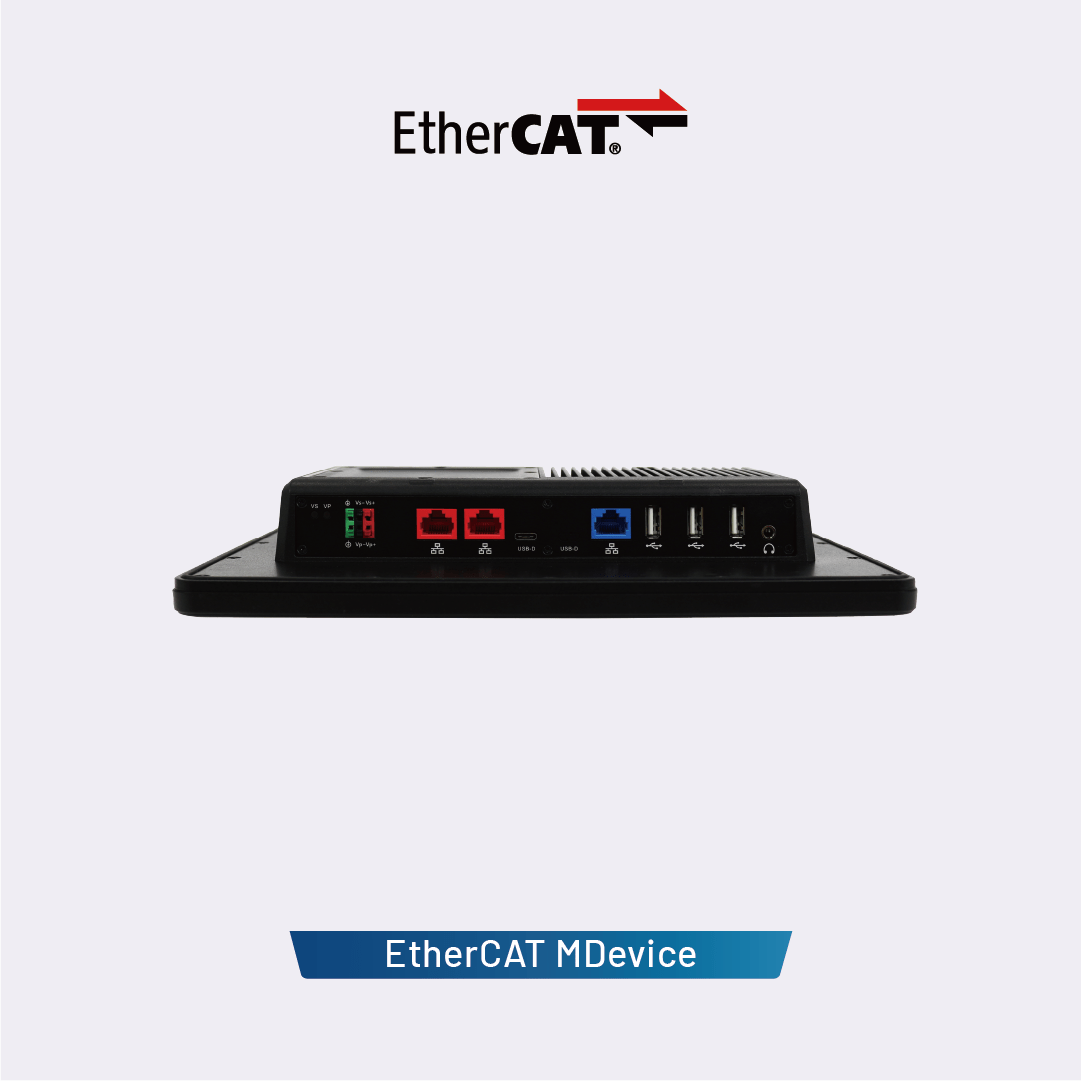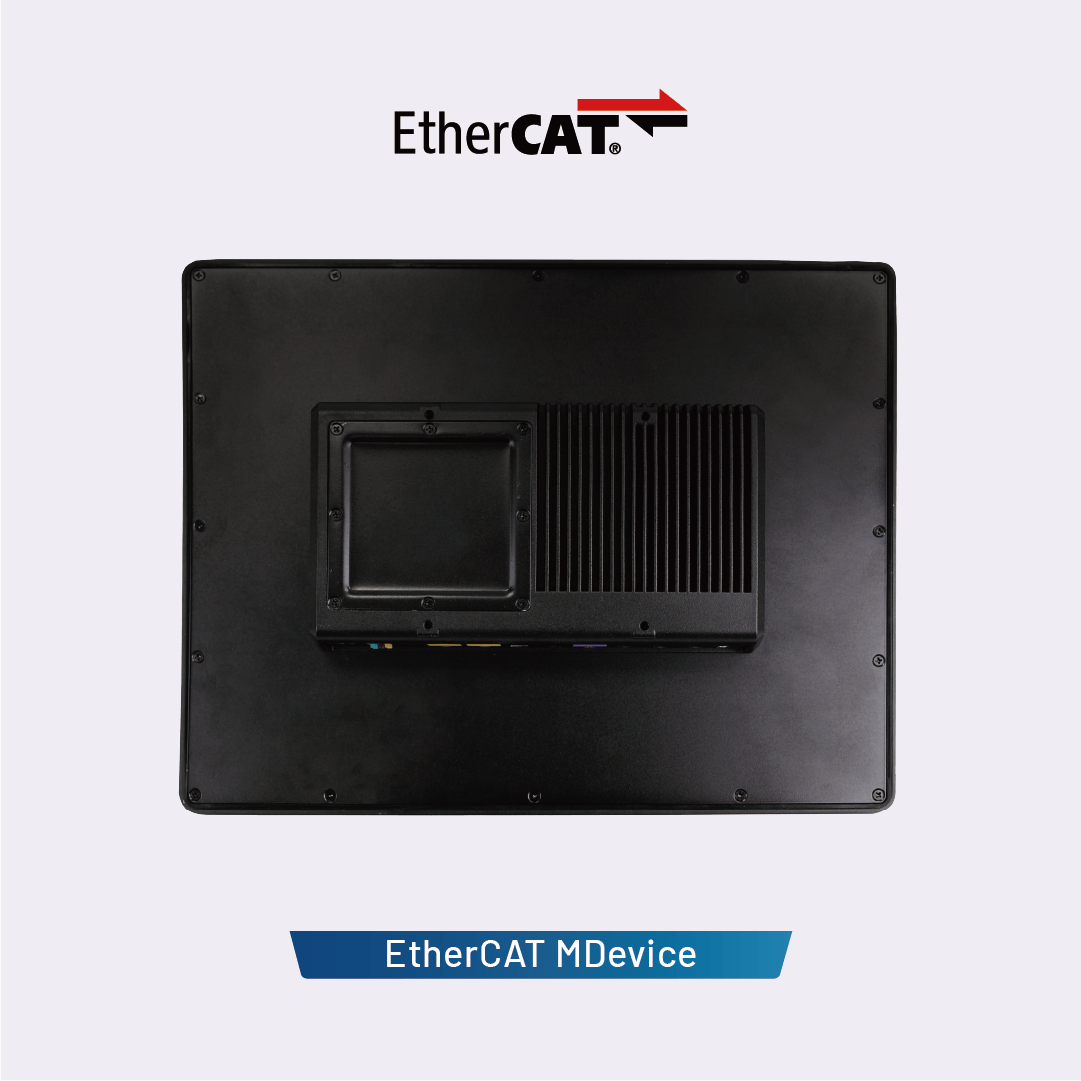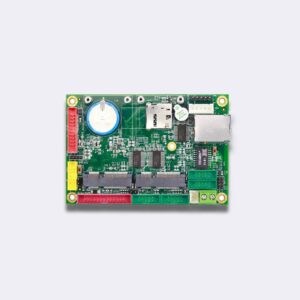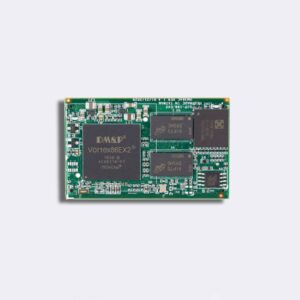ICOP’s QEC-PPC-M series (QEC-PPC-M-090T / QEC-PPC-M-150T) are EtherCAT MDevice with Panel and Touch LCD system, designed for real-time, reliable, and synchronized industrial HMI control. Each model integrates a high-resolution touch-enabled TFT LCD (9″or 15″), providing a rugged case and powerful control core within a compact system.
Efficient Development with 86Duino IDE
The development environment utilizes 86Duino IDE, an industrial Arduino-like platform that supports EtherCAT API, graphical programming tools, and high-level C/C++ programming, enabling rapid development while reducing hiring challenges and time to market. Beyond EtherCAT, the QEC-PPC-M series also supports Modbus TCP, Ethernet TCP/IP, and CAN bus, providing a complete industrial automation solution.
Real-Time Precision for Motion and I/O Control
The QEC MDevice supports essential EtherCAT functions including PDO, CoE, FoE, Distributed Clocks (DC), and etc., ensuring flexible integration with third-party EtherCAT devices such as servo drives and digital I/O. With a minimum cycle time of 125 μs and jitter of less than 1 μs (via the 86Duino IDE), it is ideal for highly synchronized motion and I/O control applications.
Read More: EtherCAT MDevice Benchmark
Robust Storage, Reliable I/O, and Versatile Connectivity with Embedded form factor
Each model features a built-in 2GB SLC eMMC, ensuring stable OS operation and offering ample storage for executables, HMI graphics, and application data. Files can be deployed via the 86Duino IDE. The IDE also integrates the LVGL graphics library, allowing developers to create modern and interactive touchscreen HMIs directly on the QEC device.
In addition to EtherCAT control, QEC-PPC-M models monitor system temperature, voltage, and current—providing useful data for carbon footprint analysis and system lifespan estimation. The Open-frame design (dimensions vary by model) supports flexible integration and customization for industrial use. Standard operating temperature is 0°C +60°C, with and extened option from -20°C to +70°C.
Each QEC-PPC-M unit features dual EtherCAT ports (for redundancy), one Giga LAN port, three USB ports, a USB debug port (for upload/debug), and HD Audio, which all can accessibly control via off-the-shelf Library.
Dimensions:
.png)
86Duino Software
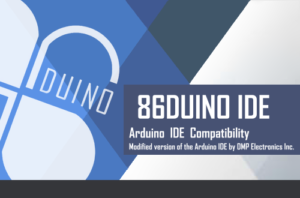
86Duino Coding IDE 501
The 86Duino integrated development environment (IDE) software makes it easy to write code and upload it to 86Duino boards. It runs on Windows, Mac OS X, and Linux. The environment is written in Java and based on Arduino IDE, Processing, DJGPP, and other open-source software.
The open-source 86Duino Software (IDE) also supports QEC products, making programming and deployment straightforward. For installation instructions, please refer to the Getting Started page (Release Note). To ensure reliable performance and access to the latest updates, you can download the software from our official software center:
Libraries
The 86Duino environment can be extended through the use of libraries, just like most programming platforms. Libraries provide extra functionality for use in sketches, e.g., working with hardware or manipulating data. A number of libraries come installed with the IDE, and 86Duino supports most of the Arduino Standard Libraries as well as provides dedicated libraries to utilize the 86Duino-specific hardware functions.
You can also download or create your own libraries. See these instructions for details on installing libraries. There’s also a tutorial on writing your own libraries; and further, you may refer to Arduino’s API Style Guide for some guidelines on making a good Arduino-style API for your library.
To use a library in a sketch, select it from Sketch > Import Library.
Supported Arduino Standard Libraries
- EEPROM – reading and writing to “permanent” storage.
- Ethernet – for connecting to the internet using the onboard LAN connector.
- Firmata – for communicating with applications on the computer using a standard serial protocol.
- LiquidCrystal – for controlling liquid crystal displays (LCDs).
- SD – for reading and writing SD cards.
- Servo – for controlling servo motors.
- SPI – for communicating with devices using the Serial Peripheral Interface (SPI) Bus.
- SoftwareSerial – for software-implemented serial communication on digital pins.
- Stepper – for controlling stepper motors.
- Wire – Two Wire Interface (TWI/I2C) for sending and receiving data over a net of devices or sensors.
86Duino Only Libraries
- Motion86 – making 86Duino as a multi-axis motion controller.
- Modbus – for communicating with various Modbus ASCII/RTU/TCP devices.
- CANBus – for communicating with devices that use the Controller Area Network (CAN Bus).
- FirmataPlus86 – connecting 86Duino with Scratch.
- Servo86 – an extended servo-motor library for controlling robot motion.
- AIServo86 – a serial-servo-motor library for controlling robot motion.
EtherCAT Libraries
- EtherCAT – making QEC as an EtherCAT system.
Supported (Non-standard) Arduino Libraries
- Audio – access the onboard HD Audio interface by the API of Arduino Due’s Audio library.
- TimerOne – access 86Duino’s 32-bit hardware timer by the API of the Arduino TimerOne library.
- MsTimer2 – access 86Duino’s second hardware timer by the API of the Arduino MsTimer2 library.
- Time86 – read the on-board RTC timer by the API of the Arduino Time library.
- SCoop – provides the API of the Simple Cooperative Scheduler for Arduino to access a light and simple environment for creating powerful multi-threaded programs or easy multi-tasking solutions.
See also the list of other Arduino third-party libraries that are compatible with 86Duino.
.png)
